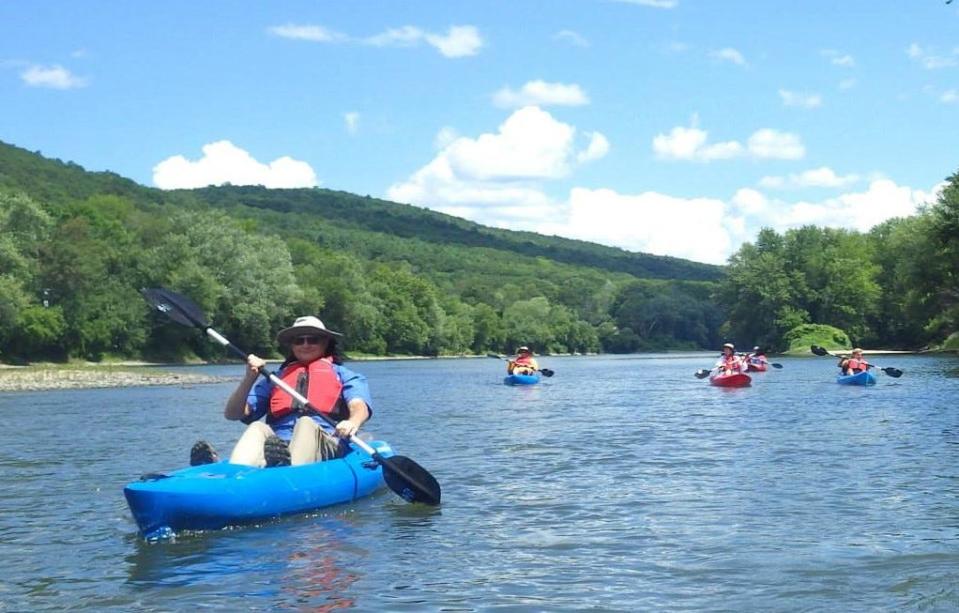After recent kayaking death, Chemung River Friends issues warning about winter paddling
There has been several days this winter when the sun has been shining and temperatures have risen into the 50s and 60s.
On such days, paddling enthusiasts are tempted to put their kayaks and canoes into the water and enjoy a pastime normally reserved for warm weather months.
The Friends of the Chemung River Watershed has some simple advice for paddlers considering hitting area waterways this winter — don't do it.
The advice comes in the wake of a fatal kayak accident Jan. 28 on Seeley Creek in the Town of Southport, when a 44-year-old Pine City man died after his craft capsized while he was paddling with two other people.

"Even when (the air) is warm, the water can still be 35 degrees," said River Friends Executive Director Elizabeth Zilinski. "What's lacking is common sense."
Those conditions can cause hypothermia and a risk of cold-water shock in even the most experienced paddlers, River Friends said.
Critical danger to rescue personnel too
Zilinski said she hasn't seen a lot of paddlers on the water this winter, but she has heard people talking about it when she has been outdoors on mild days.
Zilinski pointed out that when paddlers get in trouble on rivers during treacherous conditions, such as frigid temperatures, they are also putting rescuers at risk.
"If you can’t get out of the water, rescue personnel must come to you," she said. "This presents a critical danger to them, too. Remember that most rescuers in these situations are unpaid volunteers who are risking their own lives to make sure our friends, family, and neighbors make it home."
Emergency responders are well trained and equipped to deal with water rescues in all kinds of conditions, said Chris Fuller, second assistant chief and water rescue team leader with the Campville Fire Department in Tioga County.
Politics This Southern Tier campground is reopening with fresh owners. What's new at Hickory Hill
But Fuller said rescuers, while prepared, would rather not have to save paddlers from hazardous conditions, including frigid temperatures and high water conditions, which are common in late winter and early spring.
"We had an incident in Owego, where a man jumped off a bridge. The (Susquehanna) river was a foot and a half below flood stage," said Fuller, who said his department wasn't directly involved in that incident. "The rescue team couldn't get in the water. We couldn't risk putting people into that dangerous atmosphere."
Cold water + cold air make for dangerous combination
Water temperature below 60 degrees can lead to hypothermia, cold shock, and heart attack even if you don’t go in the water, River Friends said, with cold air and cold water making for an especially dangerous combination.
A simple rule, according to Zilinski, is if the water temperature and air temperature combined are not more than 120 degrees Fahrenheit, it’s too cold to paddle. This rule doesn’t consider wind chill and other factors, but it’s easy to remember, she said.
Zilinski added that dry suits will protect against hypothermia, but will not prevent it.
"The hypothermia risk when the water temperature is more than 60 degrees is low," said Zilinski. "That risk increases to moderate between water temperatures of 55-59 degrees, to high between 45-54 degrees, and to extreme if the temperature is below 45 degrees."
No matter the conditions, River Friends recommends always wearing a life jacket.
Follow Jeff Murray on Twitter @SGJeffMurray. To get unlimited access to the latest news, please subscribe or activate your digital account today.
This article originally appeared on Elmira Star-Gazette: Chemung River Friends warns paddlers to avoid the water in winter

